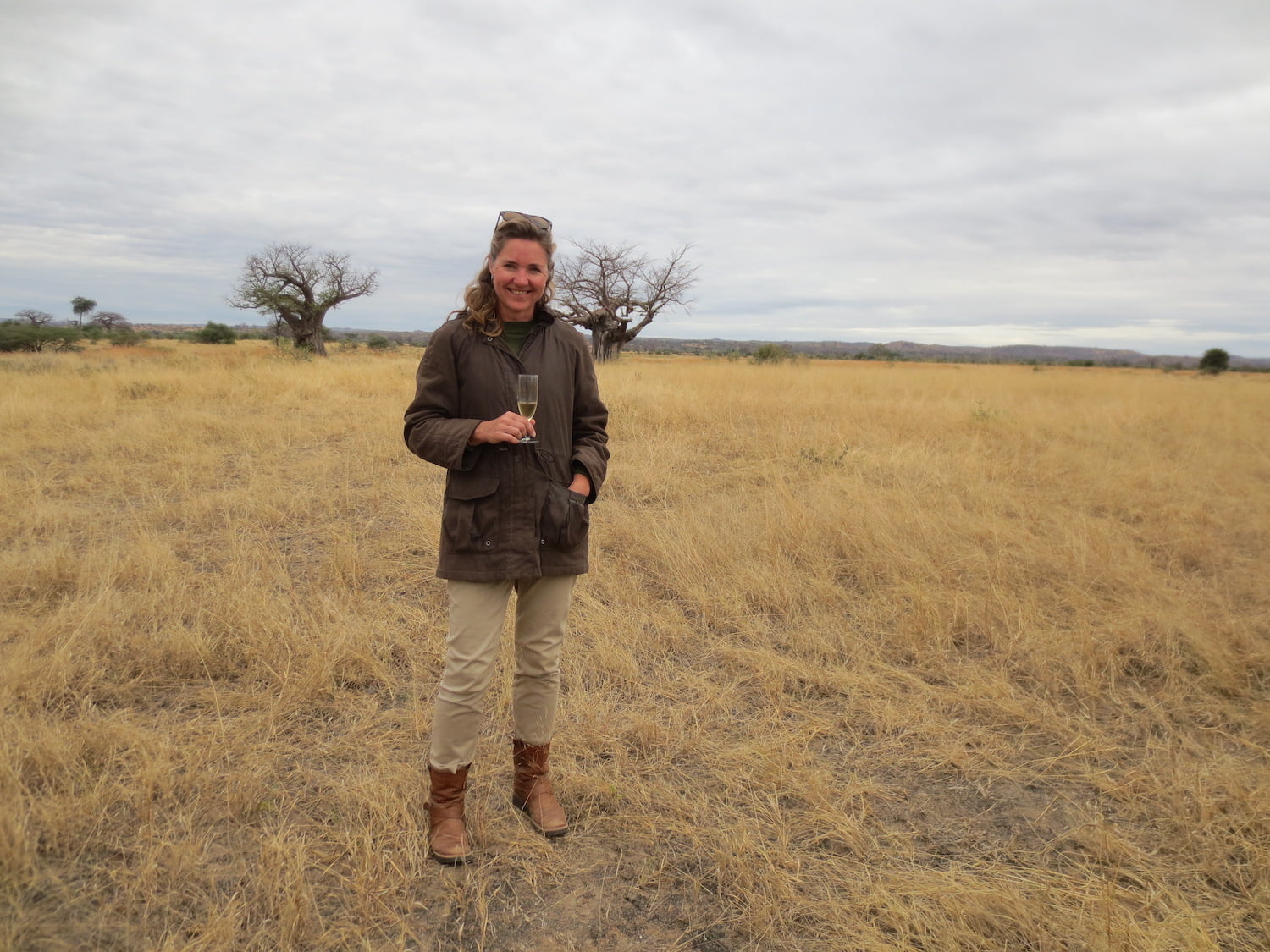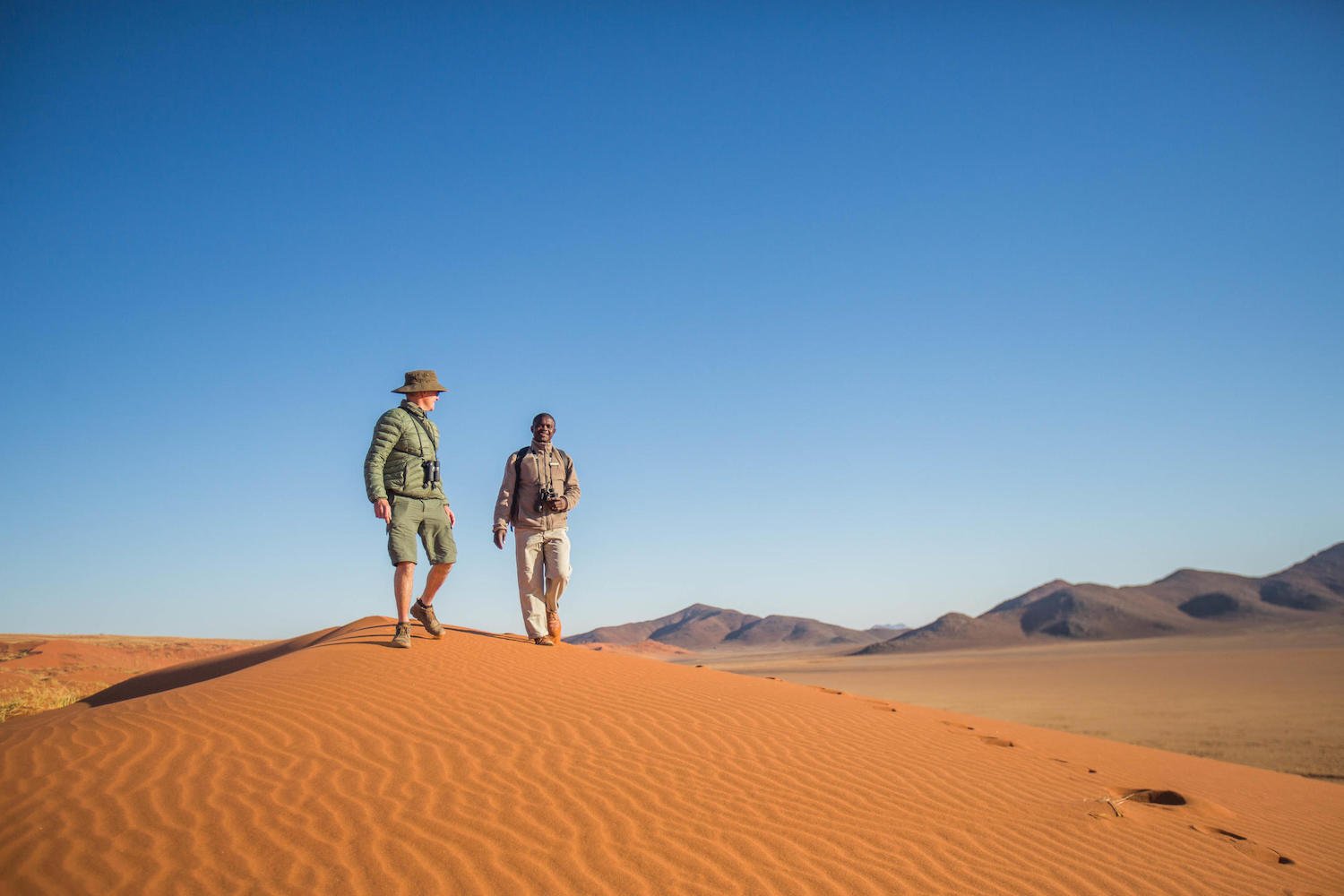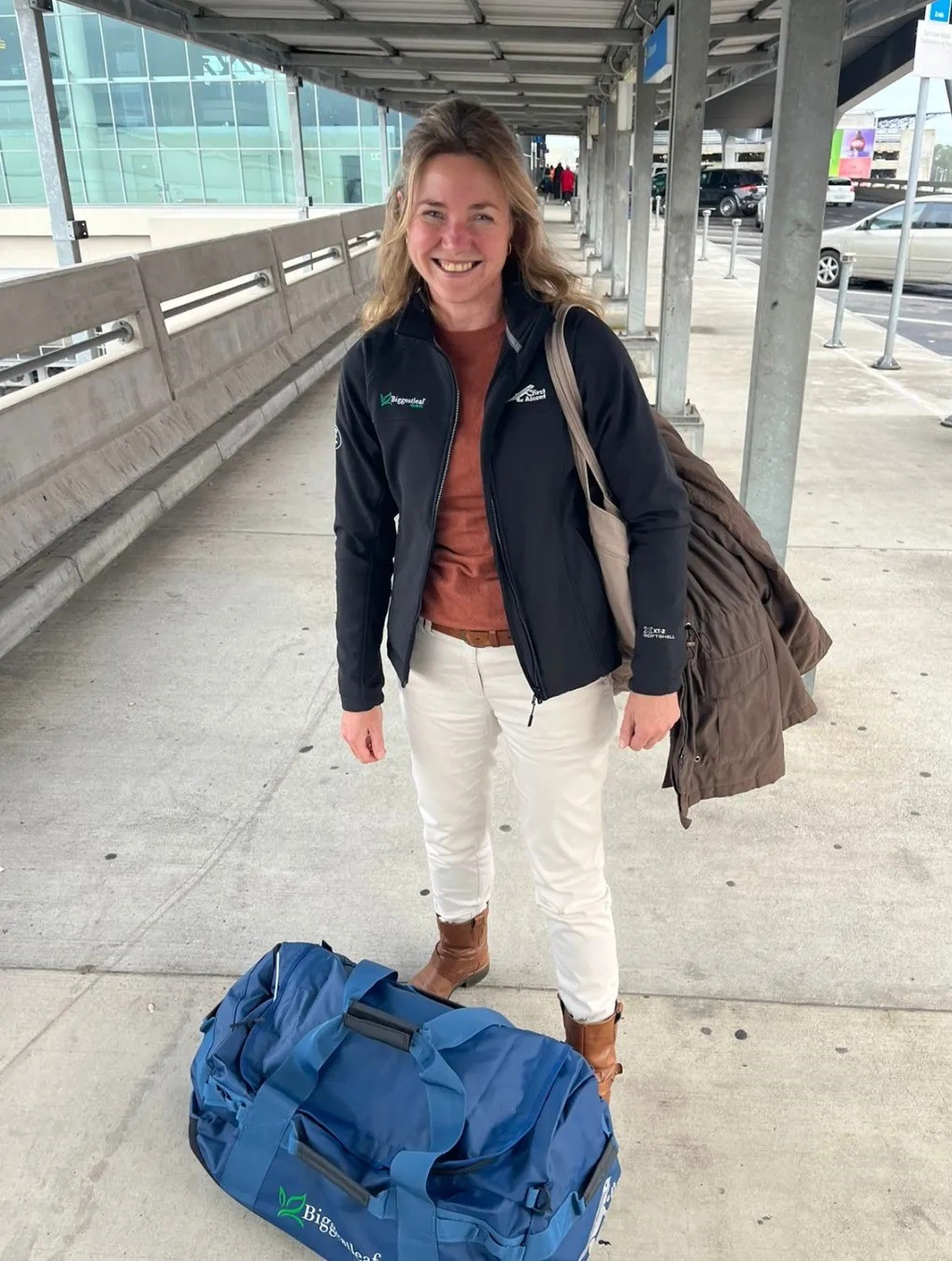WHAT TO PACK FOR YOUR HIGH SEASON SAFARI
There are three important things to remember about packing and dressing for a peak-season safari between about July and October:
- Early mornings and nights can be very cold with frost or fog in some places
- Days can be very warm and extremely sunny
- Game drives often depart just before dawn and return just before dusk
The solution: dress in layers and don’t overlook important items like scarves, beanies and gloves.

What’s covered in this guide
Explore the highlights of this post with ease by using the table of contents below to navigate to sections of interest.
How cold does it get in Africa?
Southern and East Africa have a dry mid-year winter that generally runs from about July to around October, with the first rains arriving about November (note that rainfall patterns can shift and are known to be ‘late’ or ‘early’.
‘Winter’ essentially means no rain, and overnight temperatures can easily drop below 10°C / 50°F, down to just above 0°C / 32°F on really cold nights in July. Daytime temperatures, however, are often very pleasant and get to around 25°C / 77°F or higher.
Will we be cold on safari?
It is important to remember that you may be staying in an uninsulated tent with no air conditioning or temperature control. Leaving a warm bed to get dressed for your morning game drive can be invigorating. The first few minutes on a game-drive vehicle – with cold air swirling around you – can be chilly. If you are at altitude or in the desert, expect very cold temperatures overnight.
Fortunately, almost all camps will provide hot-water bottles for your bed and on game drives, as well as extra blankets. Hot beverages are always on tap and the morning chill seldom lasts long. The solution is to dress in layers.

Even desert environments like Namibia require warm jackets as temperatures can be very cold.
How to dress in layers
Starting from the ground up:
- Closed shoes (vital for when you get off the vehicle for refreshments or comfort breaks)
- Socks
- Trousers (some opt for zip-off legs. If you prefer shorts, there is almost always a blanket on the vehicle to keep your legs warm)
- T-shirt
- Long-sleeved top
- Fleece, hoodie or jacket (need not be waterproof)
- Fingerless gloves (so you can use your phone or camera. ‘Touch-screen’ gloves with a textured finger tab also work)
- Scarf, buff or ear warmers
- Beanie or cap
Take a lightweight, small bag with you so you can pack away your top, jacket, beanie, scarf and gloves as the day warms up. For your afternoon drive, take the bag along so you can put on these items as it gets cooler.

Always pack a beanie, sunglasses, jacket, trousers, socks and closed shoes for your dry-season safari.
What colours to avoid
For all safaris, take your cue from nature and the safari guides. Raid your closet for all your suitable clothes in greys, greens, browns and khakis. Blending in as much as possible is crucial, especially if you will be taking nature walks, which are more common at this time of year because of the low chance of rain and lower grass.
Avoid:
- Bright colours – they signal danger in the wild
- White – it gets dirty in the dust and creates a high contrast against the bush, allowing game to see you more easily (this is why albino babies are often killed and why herbivores often have white tails – so they can keep in contact with each other on the run. No species is pure white as it stands out too much)
- Black and blue – they attract tsetse fly
Other useful items for a peak-season safari
- Long pyjamas (especially if you are not staying at a lodge with air conditioning or underfloor heating or if you have a sleepout or fly-camping booked)
- Bed socks
- Sunscreen (days are cloudless and the UV factor can be very high)
- Anti-allergen medication (especially if you are allergic to dust)

Take your colour inspiration from nature and opt for dull browns, greys, greens and khakis.
The coldest places on safari
From our experience, these are some areas where temperatures can plummet:
- Namibia especially Etosha National Park, Namib-Rand Nature Reserve and Sossusvlei. Swakopmund and the Skeleton Coast are often swathed in thick, cold fog.
- Botswana in the Central Kalahari Game Reserve and Makgadikgadi Pans especially for early morning activities like interacting with habituated meerkats or sleepouts on the pans.
- The highlands of Tanzania – lodges in the high mountains around Arusha, the Ngorongoro Crater and Mount Kilimanjaro (which has a permanent glacier) can be chilly.
- Rwanda’s Virunga Mountains are at high altitude, meaning nights can be very cold
- Johannesburg and Cape Town (both cities in South Africa) and Windhoek in Namibia generally have cold mornings and nights.

Take your colour inspiration from nature and opt for dull browns, greys, greens and khakis.
PHOTO CREDITS Dr Paul Brower, Serengeti Balloon Safaris, &Beyond and Uncharted Africa








